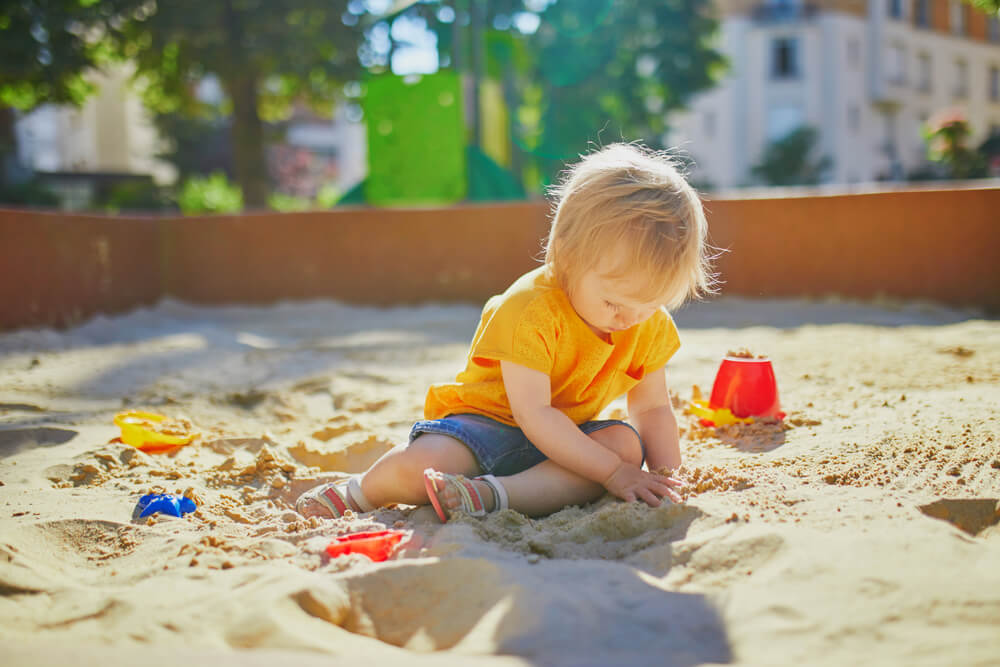When most parents think about what temperature is safe to take baby outside, they worry about cold temperatures. However, the reality is that hot temperatures can actually be even more dangerous for your baby. Young children struggle to properly regulate temperatures and hydration levels. Just being a few degrees too hot can lead to heatstroke, dehydration, and all sorts of other problems. If your family wants to have fun in the sun, you need to make sure you follow these heat safety tips.
Pick Breathable Stroller Materials
Most strollers tend to be made of thick foam to cushion and protect your children. However, this material also traps a lot of heat. If you plan on walking around with your child in a stroller a lot, it may be worth investing in a summertime stroller. Look for one with mesh material that allows plenty of airflow around your baby. You may even want to consider some of the newer athletic strollers that have moisture-wicking material as well.
Enjoy a Refreshing Chilled Snack
Taking enough liquid is an important part of avoiding sunstroke. However, many children feel less thirsty when they are hot, so they might not be drinking enough milk or water. Consider making popsicles, smoothies, or other treats that involve cold liquid. This can encourage your child to “eat” their liquids, which helps them stay hydrated without having to convince them to drink. Another perk is that the cooler temperatures can slightly lower your child’s interior body temperature.

Stay in the Shade
When considering what temperature is safe to take baby outside, you should keep in mind that there is actually a huge difference between temperatures in sunny and shady spots. In the shade, temperatures can feel 10 to 15 degrees cooler because the sun’s rays are not directly heating up your child. Though you still need to follow the safety precautions for the overall outdoor temperature, staying in the shade can slightly reduce overheating risks.
Switch to a Cool Part of the Home for Naptime
Do you ever notice that certain rooms feel cooler? Heat rises, so upstairs rooms always feel hotter than those on the ground floor. Rooms on the southern or western part of the home also get hotter because they are exposed to direct, strong sun rays. Windows tend to let a lot of the heat in, so rooms with large windows also feel warm. Try to find the part of your home that is the coolest and set up a temporary napping area in that space. This will help your child stay comfortable while they sleep.
Pay Attention to Weather Reports
Remember that it can be hard to guess the temperature just by feeling it. A safer move is looking up a local weather report and seeing the temperature than the perceiving one outside. What temperature is safe to take baby outside? Most experts recommend being cautious if temperatures rise above 90 degrees Fahrenheit. Humidity can make a child feel hotter, so in high humidity, any temperature above 84 can be problematic.
Go for a Swim
Nothing cools off and entertains an overheated child as quickly as water. Fill a small play pool, bathtub, or sink with cool water. Keep in mind that the water does not have to be freezing cold. Even room temperature water feels refreshing on a hot day. Set up a few toys and let your child have a blast playing in a cool environment.
Circulate Air with a Fan
Fans help the air circulate around the room, blowing away all the body heat that builds up around your child. If you have ceiling fans, set them to rotate counterclockwise. This pushes cold air down and creates a sort of wind-chill effect. Another trick for making a fan feel even cooler is setting a bowl of ice water in front of an oscillating fan. This pushes super-chilled air right toward your child.
Change Your Child’s Bedding
Many parents use nylon or other water-resistant materials during their child’s first few years. However, these materials tend to hold onto moisture and prevent heat from dissipating. This can lead to a sweaty, sticky kid who cannot sleep because they are just too hot. Transitioning to bedding made from natural fibers can make bedtime a lot more comfortable for your child. Cotton is durable, lightweight, and absorbent. Another great option is linen.
Wear Sunscreen Outside
Just being outside for a few minutes can be enough to cause sunburn during the summer. Severe sunburn can raise a child’s temperature and give them a fever, so it is important to avoid it. Try to apply a sunscreen with an SPF of at least 30 every time your children go outside. Make sure to reapply it every hour or two as well.
Focus on Cooling down Right before Naps
If the baby feels warm right before bedtime or naptime, they are likely to get fussy instead of sleeping. This leads to a negative cycle during which your baby cannot sleep because they are hot, and then, they complain about the heat more because they are tired and grumpy. Making time to run a fan in their bedroom before naps and having a cool bath before bed can improve sleep schedules and cut down on warm weather fussiness.
Select Warm-Weather Clothing
The clothing your baby wears can help keep you from having to worry if your baby feels warm. Try to find the most lightweight, minimal clothing possible. If your child will not be in the sun, you might even want to consider letting them run around in just a diaper. Clothes do provide helpful sun protection outside, but you need to choose them carefully. Select loose clothing made from natural materials to help keep your child from overheating.

Pick Relaxing Activities
During the hottest days, you may want to gently steer your child away from sports and other physically draining activities. Instead, try getting them involved in a craft project, educational TV program, or other stationary activity. This can help them avoid working their way into an overheated state.
Apply a Cool Compress
Even when you do not have time to run a cool bath or take a trip to the pool, water can help your child beat the heat. Wet a cloth with cold water and wring it out until it is just slightly damp. Then, place this at pressure points like the neck, backs of knees, forehead, or inner elbows. This can be a great way to keep a fussy child from feeling hot and getting overheated.
By making sure that your children are adequately hydrated and have enough time to cool off, you can keep them safe during heatwaves. Interested in more child safety advice? Worldwide Pediatrics Group has spent years researching how to keep your loved ones safe and healthy. To learn more about our services, get in touch with us today.



